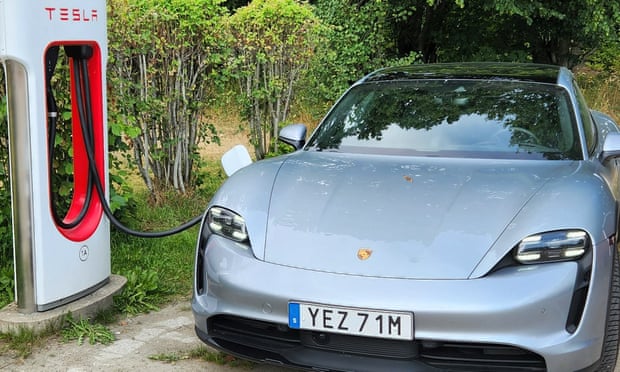World EV road trip reveals an Australian market in the slow lane | Environment
As the recent electric vehicle summit got under way, Dr Jake Whitehead was sitting in a plane somewhere over the Indian Ocean.
The conference was intended as a reset to overcome nearly a decade of Australia’s policy inertia on electric vehicles and road transport under the former Coalition government – but Whitehead, head of policy at the Electric Vehicle Council, was on holiday.
It had been a dream trip for a longtime EV researcher: three separate stints across thousands of kilometres in three different countries with his partner – all in electric or hybrid vehicles.
As his colleagues were shaking hands and listening to keynote speeches, Whitehead was getting a first-hand education in what the rest of the world had been up to on the electric vehicle front during the two years Australia closed its borders to the world.
“You can read as much as you want online but it’s not until you’re actually over there and able to do the comparison that you can see what’s actually happening here in Australia,” he says.
“It’s amazing to see how much further these countries have come.”
The electric journey started with a two-day stopover in Los Angeles where the couple checked out the new Ford F-150 Lightning and Rivian R1T electric utes that weren’t yet available in Australia.
Next, they headed north for a 2,500km drive through the Canadian wilderness to Banff in a Tesla Model Y. From there, they skipped over to Iceland where they rented a plug-in hybrid 4WD as the Fagradalsfjall volcano began to erupt. For the final leg they flew to Sweden where Whitehead’s wife rented a luxury Porsche Taycan Cross Turismo for his birthday.
Along the way Whitehead says he couldn’t help making mental notes: in the US, Volkswagen’s charging subsidiary Electrify America, was building a vast charging network at easily accessible locations such as Ikea and Starbucks carparks. In Vancouver, car-sharing schemes were allowing people to temporarily use cars including electric vehicles. Over in Europe, Tesla had opened up its charging network to the public, meaning anyone could use it.

“I lived in Europe for six years, but I hadn’t been back in five years and the change has been huge,” Whitehead says. “Everywhere you go, you see electric vehicles. You go to the supermarket, there’s EVs there. Go to the beach, there’s EVs. Driving along the highway? EVs.
But it was in Sweden where he noticed the biggest changes. There were electric cars at the airport and when Whitehead went to visit friends, they couldn’t understand his interest in their vehicles.
“I’d show up and say: ‘Oh, you’ve got an EV’,” he says.
“They’d reply: ‘Yeah, so what?’”
It is an experience about to be shared by many Australians: over the last decade the country’s politicians may have dragged electric cars into the culture wars but in the two years Australia spent closed off during the pandemic, the world changed.
And as the futures sketched out in government planning documents reveal, other countries have begun to reshape…
Read More: World EV road trip reveals an Australian market in the slow lane | Environment
